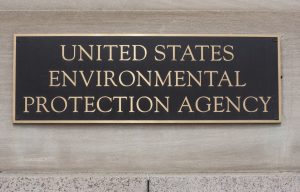Since 1979, commercial general liability (CGL) insurers have relied on the New Jersey Supreme Court case of Weedo v. Stone-E-Brick, Inc. and its progeny to argue that a subcontractor’s defective work can never qualify as an “occurrence” under a standard form ISO CGL policy. This argument is contrary to both the language of standard CGL policies and the trend in recent case law, but courts in New Jersey and elsewhere have continued to cite Weedo for this proposition. With its new decision in Cypress Point Condominium Association, Inc. v. Adria Towers, LLC, the New Jersey Supreme Court has now finally relegated Weedo to its proper status as an historical footnote based on outdated policy language.

Cypress Point involved claims for rain water damage to a condo building. When the condo association began noticing the damage, it brought claims against the developer/general contractor and several subcontractors. The association alleged that the subcontractors’ defective work on the exterior of the building allowed water leaks that damaged steel supports, sheathing and sheetrock, and insulation. When the developer’s CGL insurers refused to cover the claims, the association sued the insurers, seeking a declaration that the association’s claims against the developer were covered.
 Policyholder Pulse
Policyholder Pulse



 When a jury awards punitive damages against an insurance company for bad faith, the maximum it may award is determined based on a multiple of its underlying award of compensatory damages and attorney fees (so-called “Brandt fees”). In a June 9 decision, the California Supreme Court unanimously held that when a judge, instead of a jury, awards the attorney fees, they should still be included when considering the maximum punitive damages the jury may award.
When a jury awards punitive damages against an insurance company for bad faith, the maximum it may award is determined based on a multiple of its underlying award of compensatory damages and attorney fees (so-called “Brandt fees”). In a June 9 decision, the California Supreme Court unanimously held that when a judge, instead of a jury, awards the attorney fees, they should still be included when considering the maximum punitive damages the jury may award. duty to defend a contractor who should have expected property damage resulting from its use of certain equipment on a construction project. The decision cautions contractors around the country to consider the expected consequences of their on-site actions to avoid arguments from insurers that any resulting damages are not accidental.
duty to defend a contractor who should have expected property damage resulting from its use of certain equipment on a construction project. The decision cautions contractors around the country to consider the expected consequences of their on-site actions to avoid arguments from insurers that any resulting damages are not accidental. The particular information request at issue in Ash Grove Cement is known as a “104(e) letter,” which is issued by the EPA under section 104(e) of the Comprehensive Environmental Response, Compensation and Liability Act of 1980 (CERCLA). As companies that have owned or operated a contaminated site know from experience, a 104(e) letter or a similar request under state environmental law typically is the first step in a regulatory enforcement process under which they face strict and retroactive liability for the costs of investigating and cleaning up the site. The ruling in Ash Grove Cement means that defense cost coverage begins at this critical juncture and continues until site investigation and cleanup is completed.
The particular information request at issue in Ash Grove Cement is known as a “104(e) letter,” which is issued by the EPA under section 104(e) of the Comprehensive Environmental Response, Compensation and Liability Act of 1980 (CERCLA). As companies that have owned or operated a contaminated site know from experience, a 104(e) letter or a similar request under state environmental law typically is the first step in a regulatory enforcement process under which they face strict and retroactive liability for the costs of investigating and cleaning up the site. The ruling in Ash Grove Cement means that defense cost coverage begins at this critical juncture and continues until site investigation and cleanup is completed.
 ourth Circuit decision should reassure policyholders in Virginia (and nationwide). Despite insurers’ skepticism, general liability insurance may in fact cover cyber events.
ourth Circuit decision should reassure policyholders in Virginia (and nationwide). Despite insurers’ skepticism, general liability insurance may in fact cover cyber events.